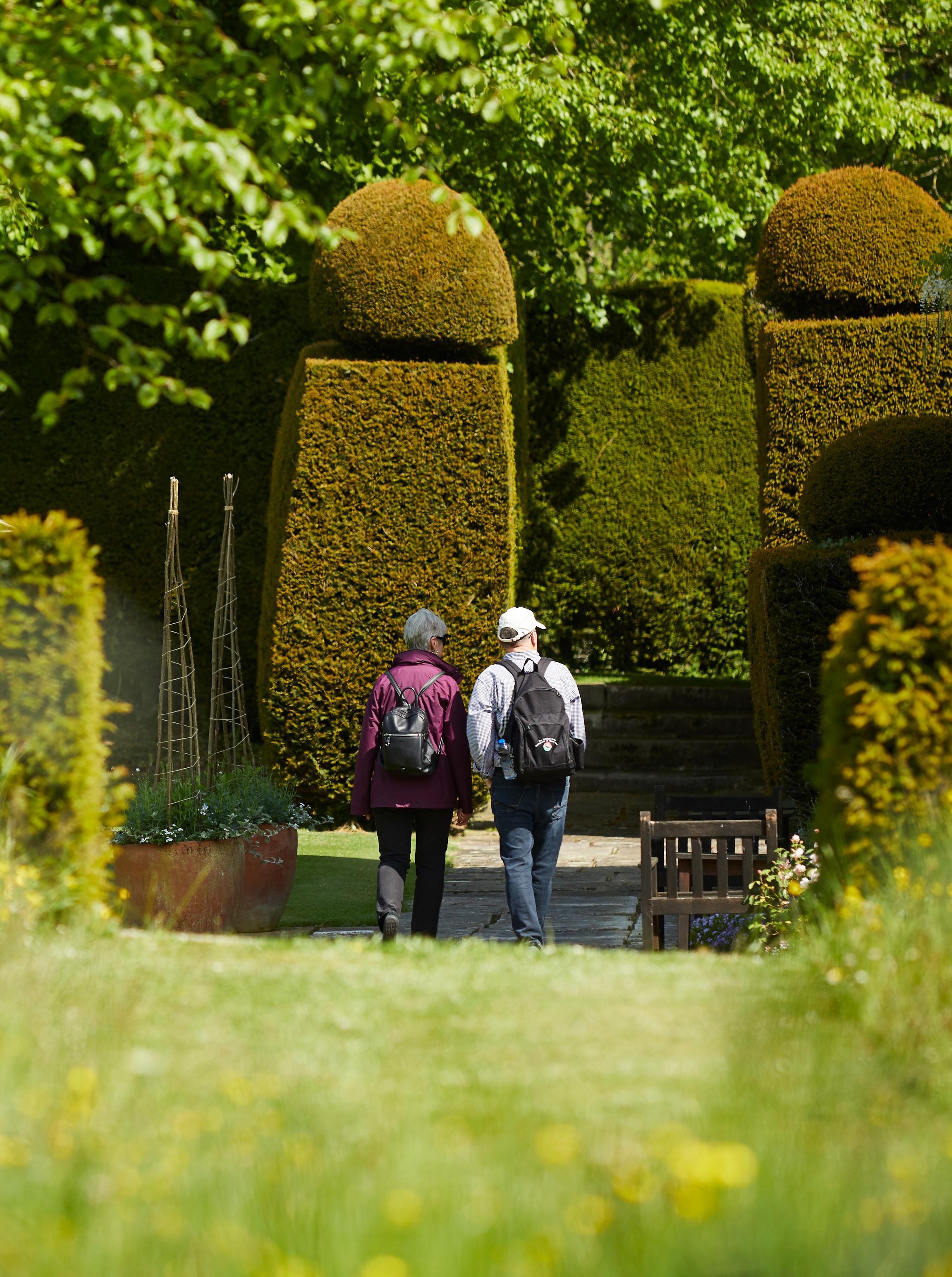
9 minute read
Cranborne
CRANBORNE GARDEN
Les Dinan HEAD GARDENER
By the time you have read this newsletter we would have already finished hedge trimming for the year. As well as pruning all of the climbing and rambling roses on all the walls and pergolas.
We try and get all the roses pruned in September and October before the cold weather sets in for the winter. Our next pruning task will be the apple trees. Pumpkin crop
In October we will start to divide up and move some herbaceous plants. This is done to fill any gaps that are in the borders, and to balance the planting structure around the garden. It is very noticeable in the summer when everything is in flower, if one side of a border has more of a certain colour than the other. October is a good month to balance the colours and heights of the plants, before they die back in the winter. Some tender plants will be lifted, potted on and placed in the green house for the winter. We will also take cutting of certain plants to bulk up our stock for next year.
If we don’t have too much rain in October, we will scarify the main lawn and the summer house lawn. If we do, then this will be done in early spring instead.
Most of our work in the Autumn and Winter months are cutting back the borders, leaf blowing, painting garden benches and generally getting ready for next year.
We have had a good crop of pumpkin this year, as you can
see by the picture.
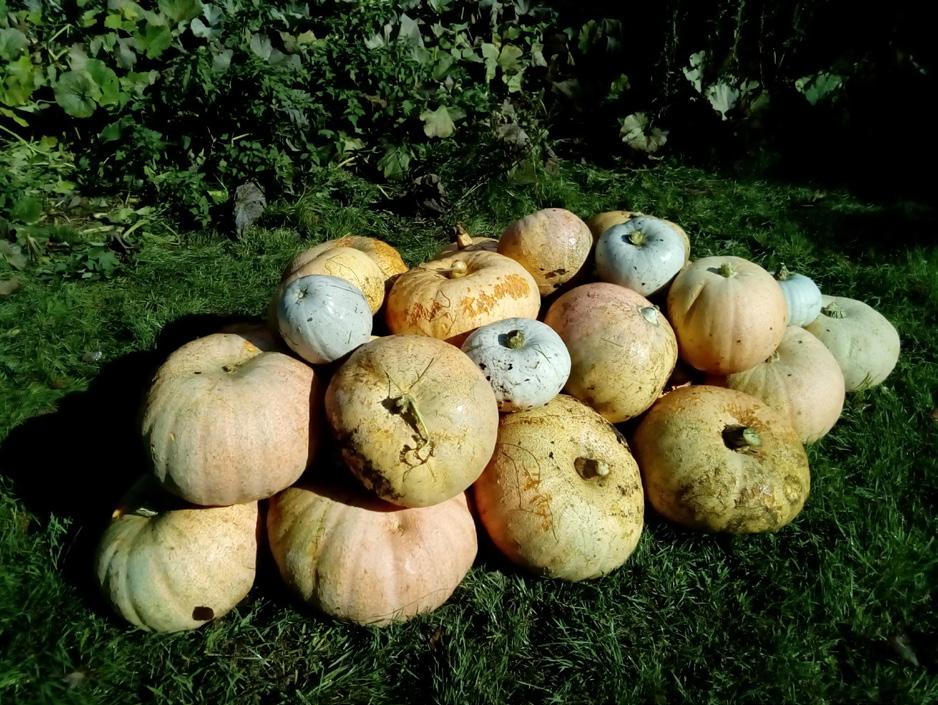
CRANBORNE FORESTRY
Richard Deffee HEAD FORESTER
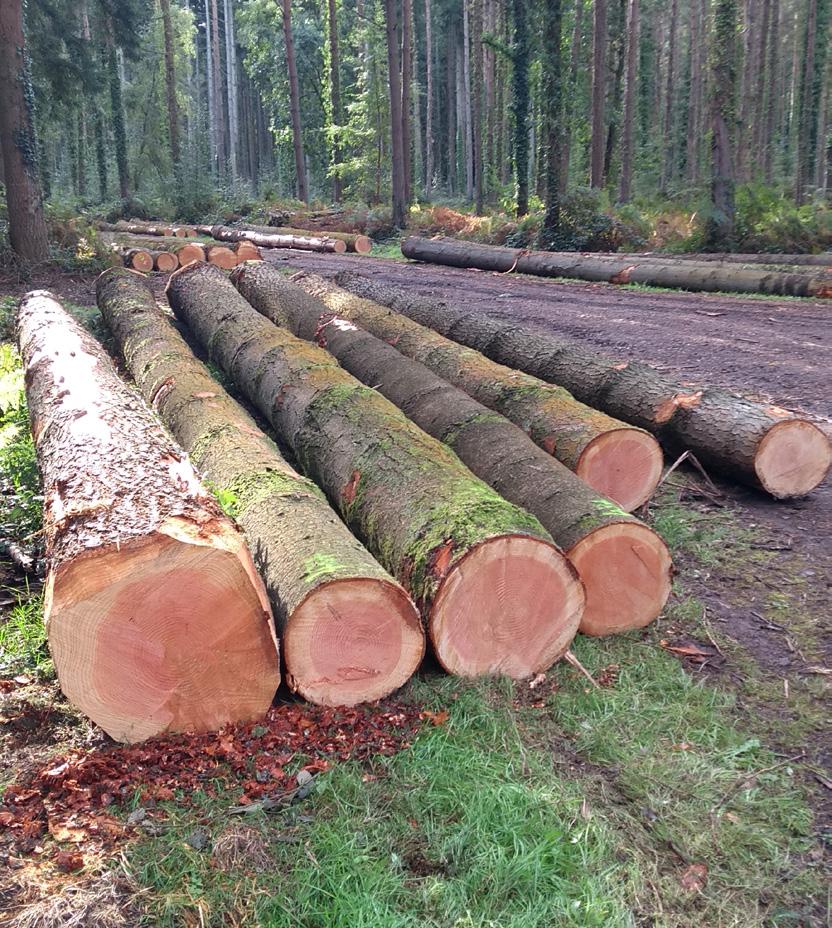
I
n 2019 East Brothers Timber bought a standing parcel of large diameter Douglas fir in Boulsbury Wood.
After a long delay they are finally harvesting this. These big logs fetch a premium price - twice the value per cubic meter of run of the mill sawlogs. The logs pictured are 12.5 metres long, only limited by the maximum length of a standard articulated lorry. This is the first standing sale of this sort – we have had to wait 50 years for the trees to get to this size. This is a selective felling - the idea being that the very best trees may stand potentially for another 50 years before harvest. In the mean-time younger trees will develop from seed under the canopy to provide the next generation. We hope to come back and take another cut in about 6 or 7 years time.
We have just completed a draft management plan for the Cranborne Wild Heath Project in advance of a meeting with Natural England. We have just reacquired several parcels of land including King Barrow which was highlighted as one of the most ecologically important areas, being the only place to have recorded the very rare, Heathland specialist, Sand lizard.
Glades and wide rides are very important habitats for many woodland vascular plants and invertebrates. In a survey of the southern glade, SSSI, in Boulsbury Wood 43 species of flowering plants were recorded over 5 visits between 30th March and 4th August 2020 (this does not include shrub species and grasses) the highest abundance being recorded on 6th July with 26 species in flower on this day. 12 species of butterfly were recorded on the 18th July. In previous studies an incredible 9 species of Orthoptera (Grass hoppers and Crickets) have been recorded in this glade. Management of these areas involves cutting, fairly randomly, roughly half of the area in early September. This cut area is alternated annually. This approach leaves an uncut area for insects and other invertebrates to complete their annual lifecycles, whilst stopping either grasses (by cutting too regularly) or scrub (by not cutting regularly enough) from dominating.
Logs, Boulsbury Wood
Wild flowers in Boulsbury Glade


CRANBORNE SHOOT
Beau Witney HEAD KEEPER
Time flies when you’re having fun! We rolled in to spring with our highest pair count of 115 pairs of English partridge, which is so the diet starts to vary. heading the right way on our Cranborne trajectory.
Each year, with careful management and shooting a surplus, you would like to increase your pair count by 50 pairs or more, this would be nice, lots of factors can change this, vermin being a constant battle and migration being the other. Despite having what we think is the best habitat, sometimes the grass isn’t always greener on the other side.
Spring was kind to us, dry with the for their help and support to make
odd showers resulted us having one of the best autumn counts in the recent history: English partridge 972 French partridge 400
Coveys (name for a family group) everywhere.
I hear you say what’s all the fuss about, these incredible birds have survived the winter, paired off, got their territories etc. In April time, pick a nesting location, start hopefully lay a big clutch 15-20, sit and incubate for 23 days, all the time trying to avoid vermin, everything likes a nice rich egg in spring! This brings us to the middle of June when peak hatch generally occurs. The chicks are the size of bumble bees when hatched and will only eat green insects for the first 2 weeks, so it is essential to make sure that all our brood rearing habitats produce the most amount of insects. After two weeks, the chicks can start to digest small seeds and green matter,
On average, we had 7.3 young to a hen, which is great and meant we could try and make history at Cranborne and give a serious shoot day a go!
September the 14th was the day and it soon approached. Plans were in full swing, 2 beaters trailers, hand sanitisers and masks everywhere. The keepers knew their roles, we were good to go....... well apart from the extreme heat! Not to glamorous in our full tweed suits.
The day was a success, plenty seen and plenty learned: 64 & half brace of English 14 & half brace of French
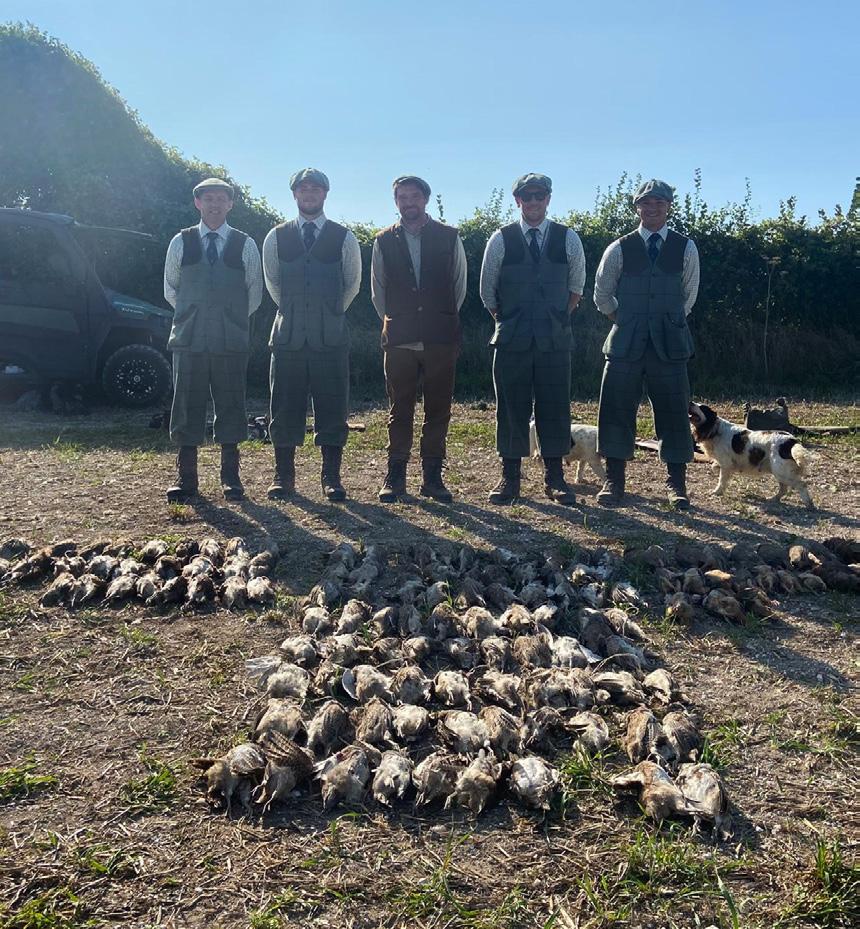
We might have had a few more but that’s a matter for the guns!
I would just like to thank everyone the laying process (an egg a day),
this day work and also to the keepers, Mark, Nathan and Jack for their hard work and dedication through the spring to produce what we produced!
Who am I kidding we love our job!
CRANBORNE FARM
Philip Rymer INTERIM FARM MANAGER
Oliver Hauxwell RURAL ESTATES MANAGER
After almost 10 years Tim Hall moved on in mid-July leaving a sizeable gap to fill. Our thanks go to Tim for all his hard work, and to Philip Rymer who has stepped into the breach as our Interim Farm Manager.
Despite a tricky growing season harvest was pleasing, and good crops of wheat, malting barley and milling oats were gathered.
Thanks to some long hours from Lee and Mickey, autumn crops of Oilseed Rape and Wheat have been planted and are now establishing well in rain. This year sees the return of milling wheat to the farm and, excitingly, an experiment where two fields have been planted with a mixture of wheat varieties. By having a diversity of genetics together we hope to make it harder for diseases to spread from plant to plant.
We are continuing to learn from our grazing experiments and were pleased, if a little surprised, by how ground nesting birds enjoyed our mob grazing plots this spring. Next year we will change how we set the fences so that we can provide safe nesting spaces, away from trampling hooves, integrated with insect rich grazed pastures. Thanks to Lee and Mickey, and Tom and Adele for the hard work they have put in this season.
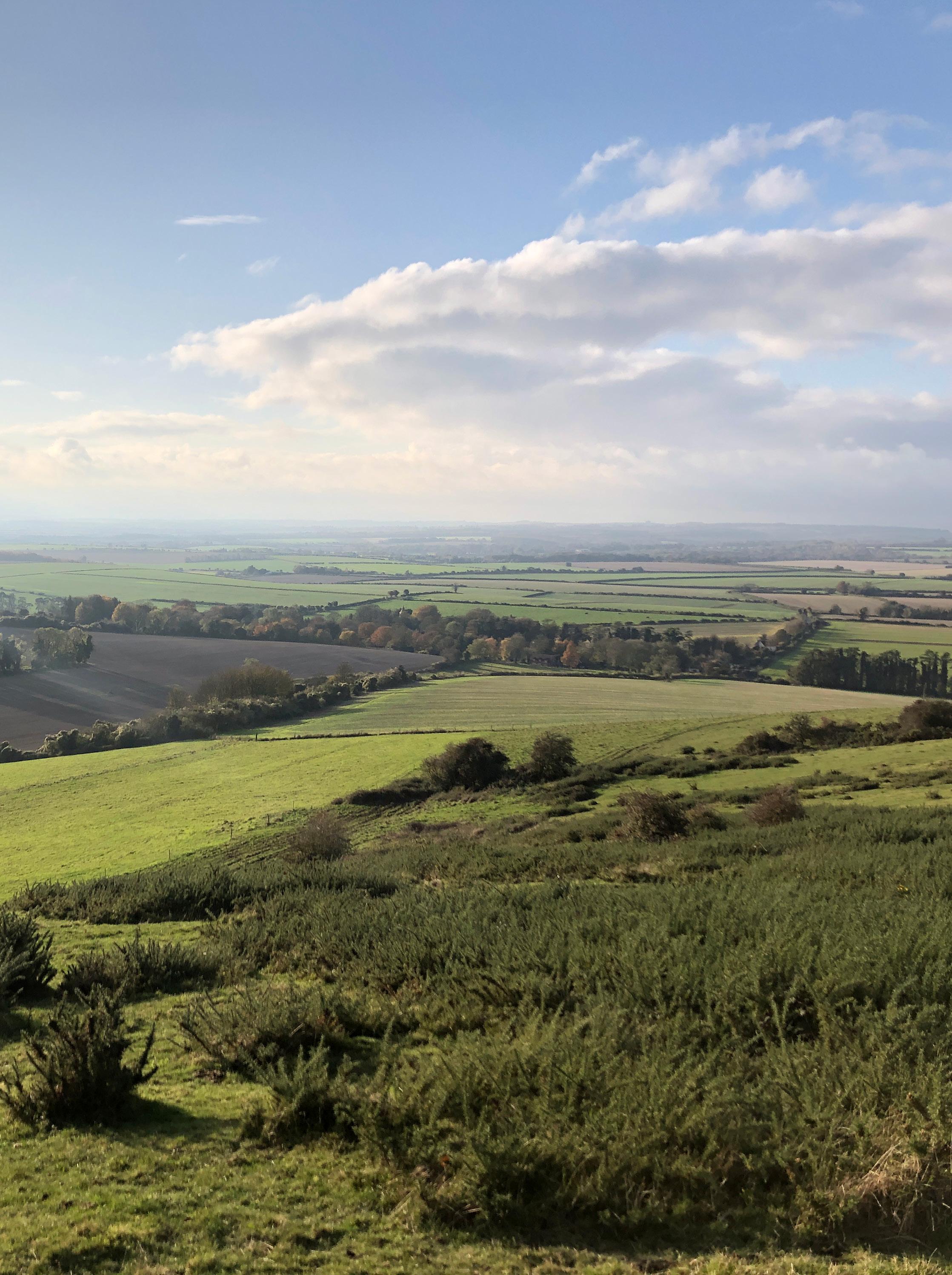
GASCOYNE ESTATES FINANCE
Malik Khalid FINANCE DIRECTOR
When I joined Gascoyne Estates earlier this year, I could not have envisaged how far reaching the consequences of the pandemic would be for the business and it has been encouraging to see how colleagues across all of our Estates have adapted to some truly unprecedented challenges
In response to a significant and ongoing suppression of income, the Finance team have had to focus on developing strategies to preserve cash and also, to supplement sources of contingent working capital. In addition, we have had to improve the robustness of our cashflow forecasting procedures and introduce additional controls over expenditure.
Although this has meant that difficult operational decisions have had to be taken, our collective efforts to work in collaboration with our tenants and preserve cash have meant that we are well positioned to mitigate the impact of the pandemic over the challenging winter months. The broader economic consensus would suggest that the business climate in early 2021 may be more conducive for longer term planning and we remain cautiously optimistic that this will prove to be the case.

GASCOYNE ESTATES PEOPLE
Lianne Baker HEAD OF HUMAN RESOURCES
It has been an interesting and busy time for me to join the company but everyone has been very welcoming so I am very happy to be here.
Fiona is on maternity leave now so I am just holding the fort until she returns next September. During my time here, I will be carrying on with some of the initiatives Fiona started, whilst adding my own ideas and experience to make all the functions of Human Resources run as smoothly as possible. I want to preserve everything that has been done, whilst creating a more paperless and efficient way of working.
One of my first jobs was to hold a coffee morning on 23rd September to raise money for Macmillan which was a great success. Everyone still based in the Estate Office was treated to fruit cake, a chocolate cake and a coffee & walnut cake, and some of those who were working from home joined us for a virtual coffee and cake ‘meeting’. It was a great excuse to eat cake and make some money for a good cause.
After the success of the Wellbeing Week last November and the virtual one in Spring, we are planning to host another event for employees in November this year. Wellbeing at work is a particular area of interest for me so it is something that I am keen to continue promoting. We have some great ideas about what to include this year.
I am excited to spend the next 12 months here getting to know you all.

NEWS FROM GASCOYNE GROUP




